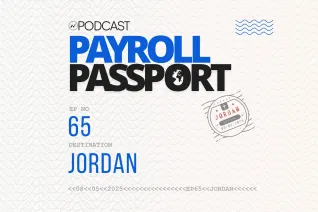Understanding Single Touch Payroll (STP): Australia's Digital Payroll Reporting System

In recent years, Australia has undergone a significant digital transformation in how businesses report payroll and superannuation information to government agencies. Single Touch Payroll (STP) is at the forefront of this modernization, a revolutionary system that has fundamentally changed how employers report payroll information to the Australian Taxation Office (ATO). This initiative represents Australia's commitment to streamlining business reporting and reducing administrative burden while ensuring greater transparency and compliance in payroll processing.
What is Single Touch Payroll?
Single Touch Payroll is a standardized digital reporting system that automates the reporting of salaries and wages, Pay-as-you-go Withholding (PAYGW), and Superannuation Liability Information to the ATO. Employers can send the information to ATO from an STP-enabled software. Understanding the Single Touch Payroll meaning is crucial for Australian businesses.
This marks a significant evolution from traditional reporting methods, where employers had to manually prepare and submit payment summaries at the end of each financial year. With STP, this information flows to the ATO in real-time, creating a more efficient and accurate reporting ecosystem.
ALSO READ: Australia: A Guideline to Payroll and Employer of Record
Who Needs to Report Through STP?
Understanding your STP reporting obligations begins with accurately counting your employees. According to ATO guidelines, your employee count includes full-time, part-time, casual, and overseas-based employees, as well as those on leave (paid or unpaid). However, certain individuals are excluded from this count, such as independent contractors, labor hire staff, office holders, religious practitioners, and closely held payees (like family members in a family business).
For example, a business with three full-time employees, one part-time employee, and two directors would be considered a micro employer with four employees (excluding the directors).
Reporting Requirements Vary by Business Size:
- Micro Employers (1-4 employees): These businesses can access simplified STP-enabled solutions and quarterly reporting concessions through registered tax or BAS agents. Special considerations apply to closely held payees.
- Small Employers (5-19 employees): Since July 1, 2019, these employers must report through STP and can use various software solutions or third-party reporting services.
- Substantial Employers (20+ employees): Larger employers have been required to report through STP since July 1, 2018, and face stricter reporting obligations with limited access to concessions.
What are the key components of STP?
At the heart of Australia's payroll revolution lies Single Touch Payroll, a sophisticated system that seamlessly integrates salary and wages, tax information, superannuation, and employment information into one seamless digital system. The system's robust tax management capabilities ensure flawless handling of PAYG withholding and tax declarations, setting a new standard for compliance with Australian regulations.
With STP-enabled software, employers can seamlessly track employment details, from working hours to status changes, build a comprehensive digital record of each employee's journey, and transmit real-time payroll data directly to the government. This capability highlights the growing market need for accurate payroll processing and timely STP submissions as organizations seek efficient ways to meet compliance requirements.
STP Phase 2: The Next Evolution
STP Phase 2 represents a significant expansion of the original STP system, introducing more detailed reporting requirements to support the government's Digital Economy Strategy.
For employers, the system has eliminated the dreaded end-of-year scramble, replacing it with a smooth, continuous process that provides constant insight into their obligations. With compliance now mandatory for all employers, organizations must implement STP-enabled software or risk potential penalties.
Employees have emerged as major beneficiaries of this digital revolution. Through myGov, they now enjoy instant access to their complete financial picture – from earnings to tax and superannuation. This transparency has not only simplified tax returns but also empowered workers with greater control over their financial information.
STP has created a more robust, efficient financial ecosystem where data flows freely and accurately. This enhanced transparency has not only reduced administrative costs but has also strengthened the foundation of Australia's business infrastructure. By seamlessly connecting employers, employees, and government agencies, STP has proven that digital innovation can create genuine, lasting improvements in how businesses operate and how people work.
As the transition to Phase 2 continues, businesses should review their current payroll processes to ensure alignment with ATO requirements and maintain compliance with these new reporting standards.
TUNE IN: Payroll Passport Ep 02. Australia
Understanding Reporting vs. Lodgement
It's crucial to understand the distinction between STP reporting and lodgement: While STP reporting provides continuous, automated transmission of payroll data, lodgement serves as the formal cornerstone of tax compliance. This process, requiring the expertise of qualified tax or BAS agents, represents the critical moment when tax obligations are officially fulfilled. This dual system combines the efficiency of digital reporting with the assurance of professional oversight, creating a robust framework for payroll compliance.
Neeyamo can handle the end-to-end requirement using our in-house STP-enabled Neeyamo Payroll and our network of highly qualified Tax and BAS agents, who act as our compliance partners.
What is the future of Payroll Reporting?
As Australia continues its digital transformation journey, STP will play an increasingly important role in shaping the future of payroll reporting. The system's success demonstrates the value of digital transformation in reducing administrative burden while improving compliance and transparency.
For businesses operating in Australia, having STP-ready systems is no longer optional—it's a fundamental requirement for payroll compliance. Organizations must ensure their payroll solutions are STP-compliant and capable of adapting to future enhancements and requirements.
As the journey toward full digital integration in payroll reporting advances, Neeyamo Payroll stands at the forefront with an in-house payroll processing solution powered by our robust calculation engine. Our platform ensures seamless payroll calculations and supports real-time STP filing, having successfully cleared a stringent government evaluation to achieve STP-enabled status.
This all-in-one solution empowers businesses to stay fully compliant with evolving regulations, all while simplifying payroll complexities and reducing stress.
By choosing Neeyamo, organizations can rely on a single, powerful platform that integrates payroll accuracy and efficiency with the real-time automation needed in today's fast-paced compliance landscape.
Reach out to us today at irene.jones@neeyamo.com and unlock the full potential of STP and process payroll in Australia with Neeyamo Payroll.
Latest Resources
Stay informed with latest updates
If you're curious and have a thirst for knowledge pertaining to the HR, payroll, and EOR universe, don't miss out on subscribing to our resources.

















